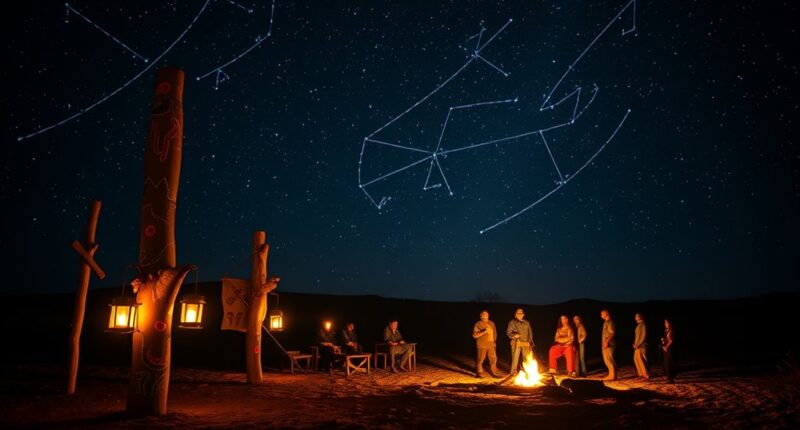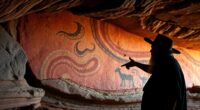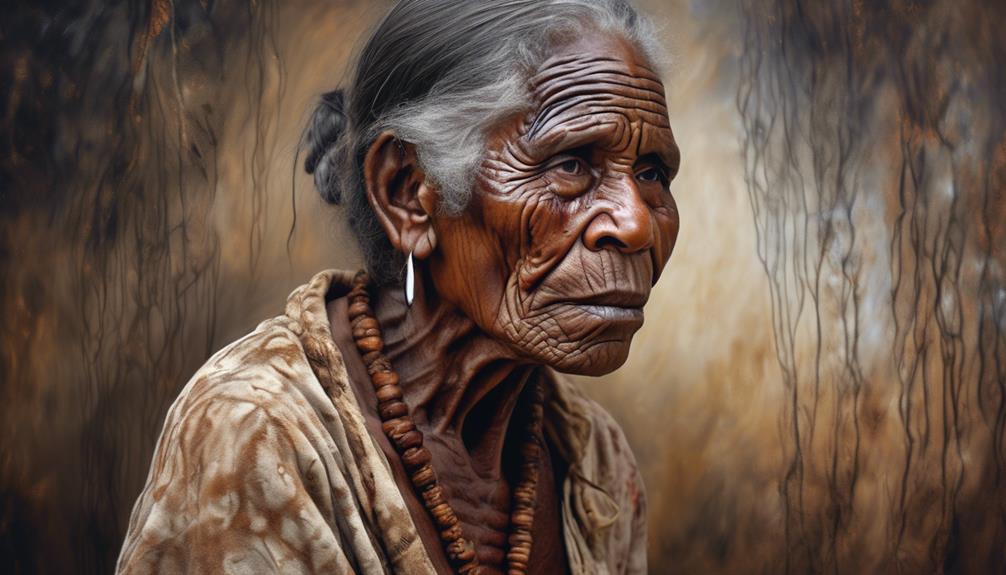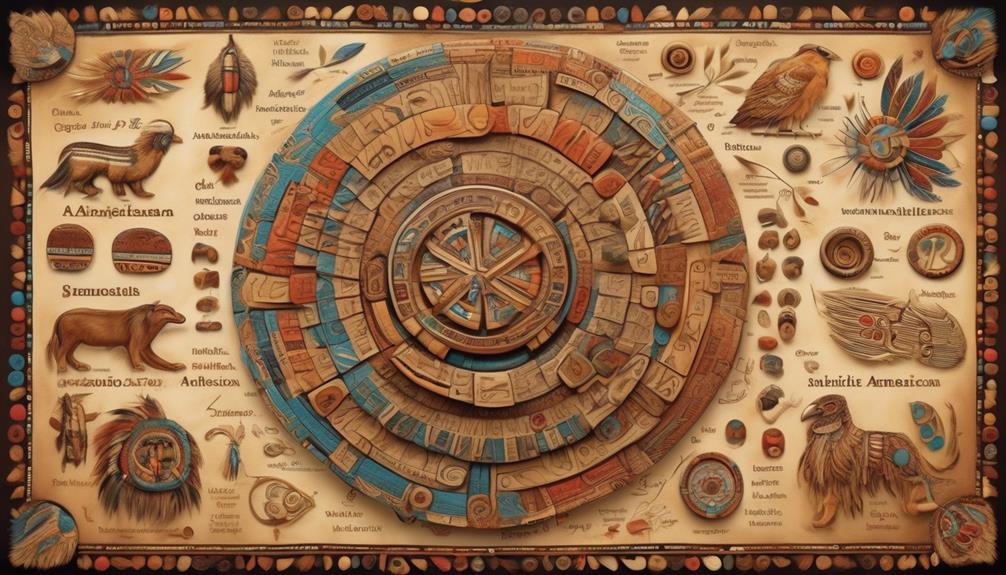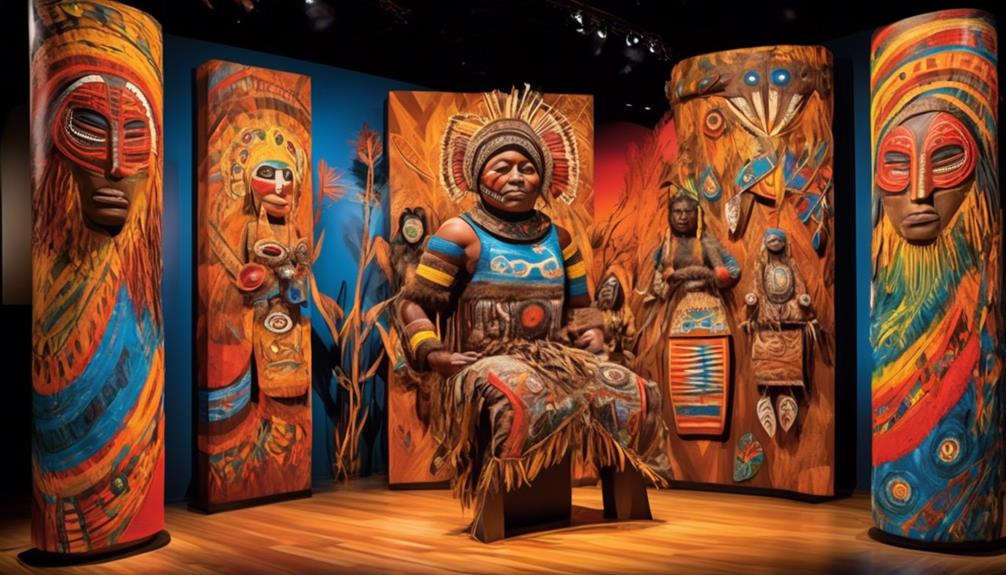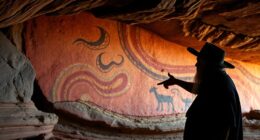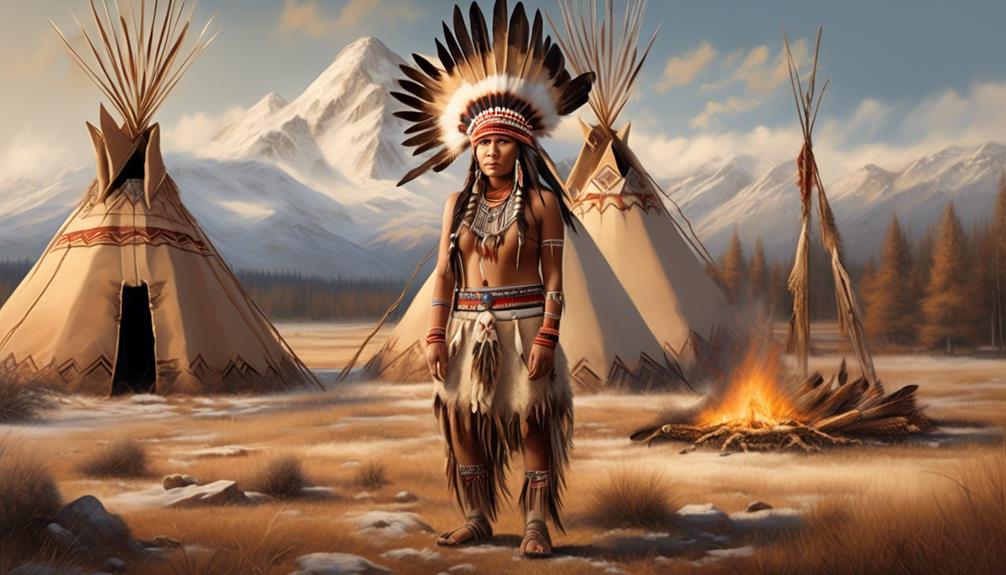You can see that Aboriginal peoples mapped the stars long before Galileo used telescopes. They developed a detailed system, using specific stars and constellations as navigational guides across vast lands. These star paths helped them find food, plan journeys, and mark seasonal changes. Their knowledge was deeply linked to land, culture, and traditions, passed down through stories, dance, and song. If you’re curious, there’s more to discover about how they used the night sky in remarkable ways.
Key Takeaways
- Aboriginal Australians used star positions and movements as celestial signposts for navigation and seasonal timing long before Galileo’s time.
- They recognized specific star patterns at certain times of year to mark important land-based activities and resource gathering.
- Knowledge of star locations and their rising or setting points was encoded in oral traditions, stories, and ceremonies for practical use.
- This star mapping integrated land, sky, and cultural teachings, serving both navigation and moral lessons across generations.
- Their sophisticated celestial knowledge allowed accurate navigation and environmental planning well before modern scientific astronomy emerged.
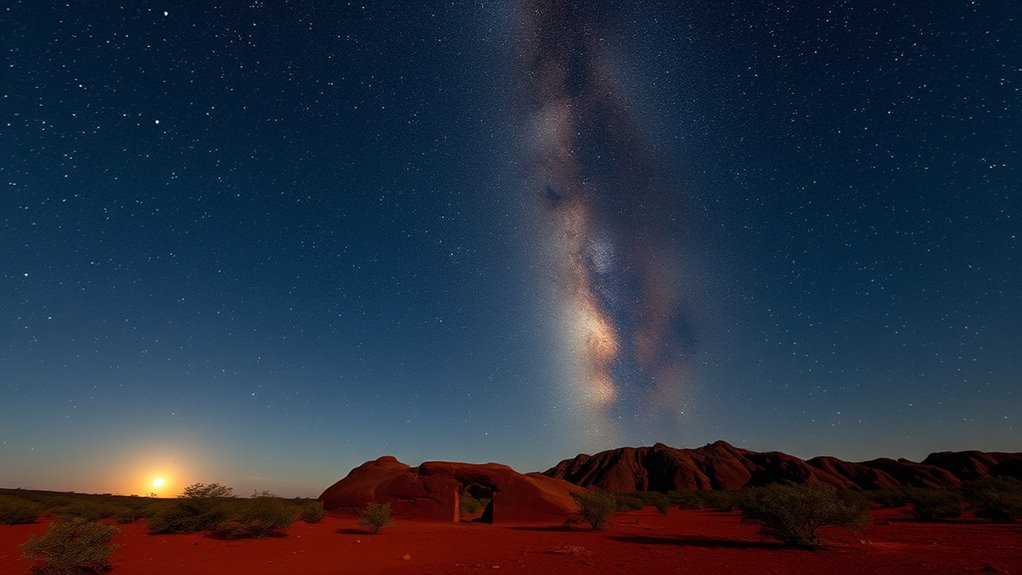
Have you ever wondered how Aboriginal Australians used the night sky to guide their lives? Long before Galileo looked through a telescope, Aboriginal peoples observed the stars with incredible skill and purpose. They developed a sophisticated system of star navigation that helped them travel vast distances across the land. Unlike modern maps, their navigation relied on the positions and movements of specific stars and constellations, which acted as celestial signposts. By recognizing the placement of these stars at certain times of the year, they could determine when to move, hunt, or gather. This knowledge wasn’t just practical; it was woven into their cultural storytelling, passing down legends, laws, and traditions through generations. The stars served as a celestial language, telling stories of ancestral beings, creation, and moral lessons. These stories explained the meaning behind the constellations and connected the night sky to their land and identity. Their understanding of star movements also included detailed knowledge of celestial timing, allowing them to anticipate seasonal changes and natural events accurately.
You might not realize it, but Aboriginal star navigation was more than just observing the sky—it was a complex, living system. They knew which stars rose or set at particular locations, signaling the right moments for seasonal activities. For example, certain star groups appeared before the start of important food gathering seasons, guiding people to specific sites or timing their hunts. They also used the stars to mark time during long journeys, ensuring they stayed on the right course when traveling through unfamiliar territory. This method fostered a deep connection between the land and the sky, making the night sky a map that is still respected and revered today. Their cultural storytelling around the stars reinforced social bonds and cultural identity, ensuring that each generation understood their place in the universe. These stories weren’t just myths; they contained practical knowledge and moral lessons, encoded in vivid narratives that stayed alive through dance, song, and oral tradition.
Frequently Asked Questions
How Did Aboriginal Australians Develop Such Detailed Star Maps?
You see, Aboriginal Australians developed detailed star maps through cultural storytelling and celestial navigation. They observed the night sky closely, recognizing patterns and linking stars to stories, which helped them navigate across vast landscapes. These stories, passed down generations, encoded essential knowledge about seasons, wildlife, and travel routes. Their deep connection with the stars allowed them to map the cosmos accurately long before Galileo’s time, showcasing an impressive, sophisticated understanding of the night sky.
What Specific Constellations Are Unique to Aboriginal Astronomy?
You won’t believe the incredible constellations native to Aboriginal astronomy! Unique Indigenous star lore and cultural star symbolism create patterns unlike any other, like the celestial Emu or the Woomera—an ancient spear-thrower. These constellations serve as essential stories, guiding seasons and traditions. Their sky maps are masterpieces of cultural expression, revealing a universe rich with meaning that predates modern astronomy by thousands of years.
How Do Aboriginal Star Stories Differ From Western Astronomy?
You’ll find that Aboriginal star stories differ from Western astronomy by emphasizing cultural symbolism and mythological narratives. Instead of focusing solely on scientific facts, Aboriginal stories encode land, history, and spiritual beliefs, making the stars meaningful within their cultural context. Western astronomy, on the other hand, often views stars as physical objects, with less emphasis on cultural symbolism. This rich storytelling tradition preserves ancient knowledge and connects communities to their environment.
Were Aboriginal Astronomical Methods Passed Down Orally?
Like a precious thread, oral traditions weave Aboriginal astronomical methods through generations. You can see that cultural transmission relies heavily on storytelling, song, and dance to pass down star maps and celestial knowledge. These oral traditions serve as living archives, ensuring that ancient observations remain vibrant and accurate, even without written records. Through this method, you realize that Aboriginal sky knowledge is a dynamic, enduring tapestry, not just static facts.
How Accurate Were Aboriginal Star-Based Navigation Techniques?
You might wonder how accurate Aboriginal star-based navigation techniques were. They relied on celestial navigation and star timing, which proved remarkably precise for their purposes. By observing the position of stars and understanding their patterns, you could navigate vast distances across the land. These methods allowed for consistent travel and hunting strategies, demonstrating a sophisticated knowledge of the night sky that was passed down orally and refined over generations.
Conclusion
So, you see, Aboriginal Australians truly knew their stars long before Galileo looked through his telescope. Their rich knowledge wasn’t just about stargazing; it guided them through life, seasons, and stories. It’s clear that they weren’t just sitting around waiting for the future to unfold—they were charting their destiny in the night sky. Remember, sometimes the old ways shine brighter than the new, proving that you can’t judge a book by its cover.
Mary is a passionate writer who brings creativity and a fresh perspective to our team. Her words have the power to captivate and inspire, making her an essential contributor to our content. Mary’s commitment to storytelling and dedication to promoting Indigenous culture ensures that her work touches the hearts of our readers. We’re fortunate to have her as part of our team.
